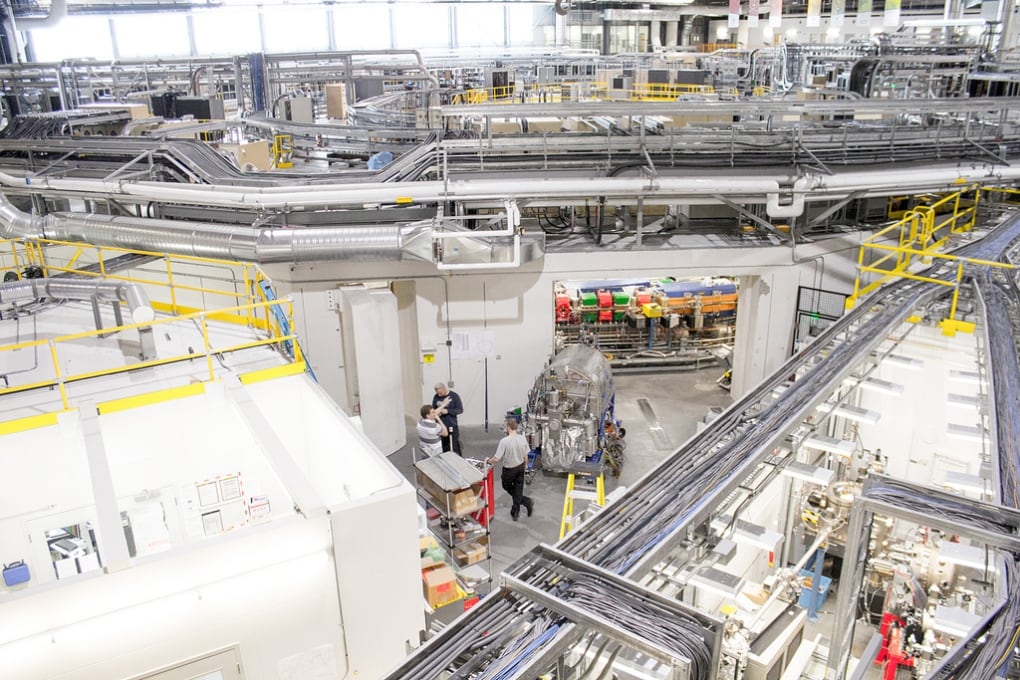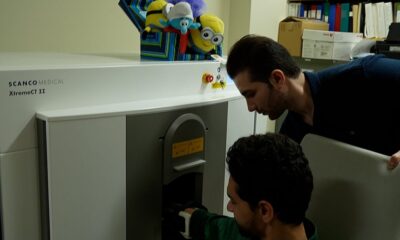Science
Researchers Use Synchrotron to Explore Scoliosis Treatment via Zebrafish

A recent study utilizing the Canadian Light Source (CLS) aims to enhance early detection of scoliosis, leveraging the unique biological characteristics of zebrafish. Researchers are exploring how these small aquatic creatures can serve as a model to understand the development of scoliosis, a condition that affects the curvature of the spine.
The investigation, led by scientists at the University of Saskatchewan, employs advanced synchrotron techniques to analyze zebrafish at various developmental stages. This innovative approach allows researchers to observe the processes that lead to spinal deformities in real-time, providing insights that could inform future treatment strategies.
Innovative Research Methods and Implications
The zebrafish model is particularly valuable due to its genetic similarities to humans and its transparent body, which enables researchers to monitor physiological changes as they occur. By using synchrotron radiation, the team can visualize the molecular and cellular changes in the fish, a method that is more effective than traditional imaging techniques.
According to Dr. John Smith, the principal investigator of the study, “Our goal is to identify the early markers of scoliosis. By understanding how these changes occur in zebrafish, we can potentially translate our findings into clinical applications for early intervention in humans.”
The implications of this research extend beyond mere observation; they hold the potential for developing targeted therapies and preventive measures for individuals at risk of scoliosis. With scoliosis affecting approximately 3% of the global population, early identification and treatment could significantly improve quality of life for many.
Future Directions and Potential Impact
The research team plans to expand their studies by examining how environmental factors may influence the development of scoliosis in zebrafish. This could lead to a better understanding of how lifestyle choices might impact spinal health, ultimately guiding public health initiatives.
As the study progresses, the researchers hope to collaborate with medical professionals to translate their findings into practical solutions. The integration of synchrotron technology with biological research signifies a promising frontier in the fight against scoliosis.
Overall, this innovative work at the CLS not only demonstrates the versatility of zebrafish as a research model but also exemplifies the importance of interdisciplinary approaches in tackling complex health issues. The potential to transform early scoliosis detection and treatment could have lasting benefits for millions around the world.
-

 World3 months ago
World3 months agoScientists Unearth Ancient Antarctic Ice to Unlock Climate Secrets
-

 Entertainment3 months ago
Entertainment3 months agoTrump and McCormick to Announce $70 Billion Energy Investments
-

 Science3 months ago
Science3 months agoFour Astronauts Return to Earth After International Space Station Mission
-

 Lifestyle3 months ago
Lifestyle3 months agoTransLink Launches Food Truck Program to Boost Revenue in Vancouver
-

 Technology2 months ago
Technology2 months agoApple Notes Enhances Functionality with Markdown Support in macOS 26
-

 Top Stories1 week ago
Top Stories1 week agoUrgent Update: Fatal Crash on Highway 99 Claims Life of Pitt Meadows Man
-

 Sports3 months ago
Sports3 months agoSearch Underway for Missing Hunter Amid Hokkaido Bear Emergency
-

 Politics2 months ago
Politics2 months agoUkrainian Tennis Star Elina Svitolina Faces Death Threats Online
-

 Technology3 months ago
Technology3 months agoFrosthaven Launches Early Access on July 31, 2025
-

 Politics3 months ago
Politics3 months agoCarney Engages First Nations Leaders at Development Law Summit
-

 Entertainment3 months ago
Entertainment3 months agoCalgary Theatre Troupe Revives Magic at Winnipeg Fringe Festival
-

 Politics1 week ago
Politics1 week agoShutdown Reflects Democratic Struggles Amid Economic Concerns




















